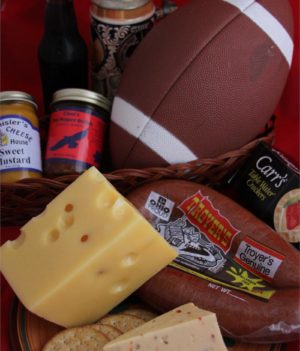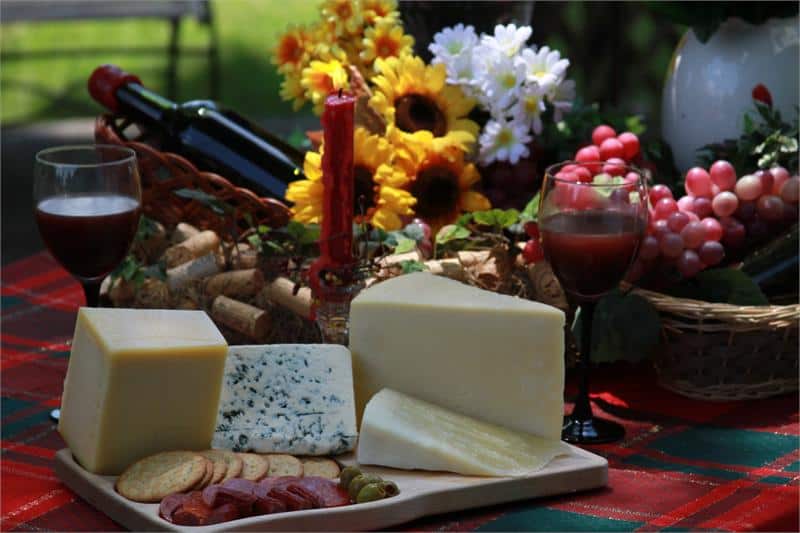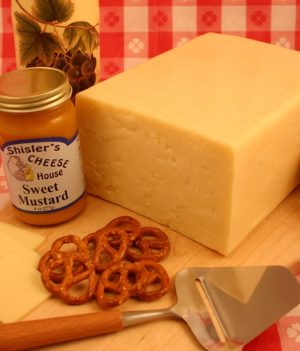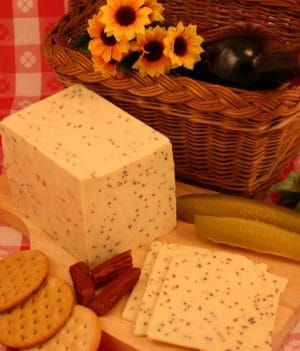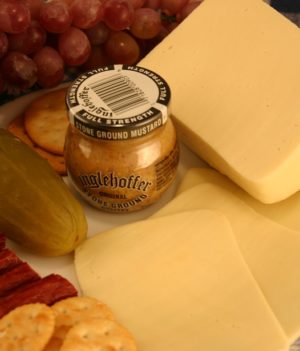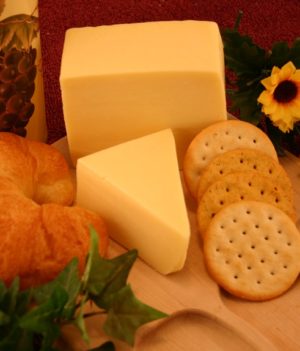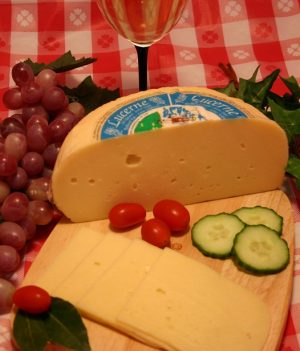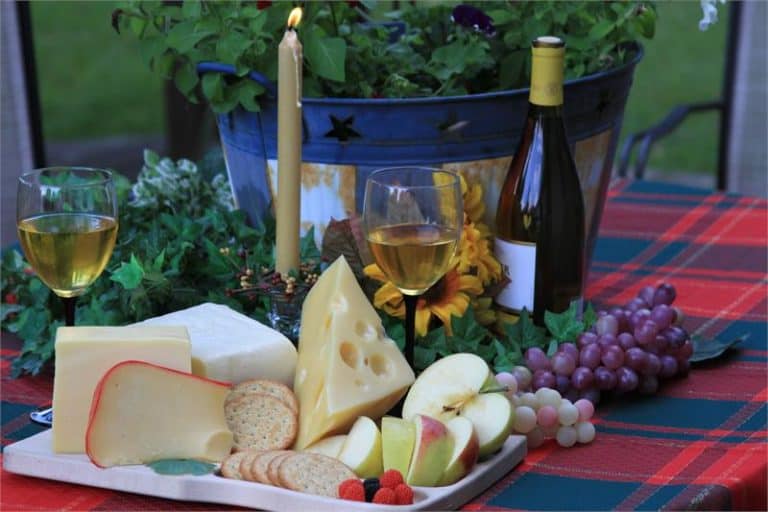Month: August 2019
Happy Labor Day weekend!
We want to wish all of our wonderful customers at Shisler’s Cheese House a very happy Labor Day weekend. Whether you’ve shopped with us once or every week, we appreciate all of you immensely.

If you’re hosting a barbecue, we have some posts that might help you. Check out our essential preparation checklist and our amazing barbecue marinades. We also have a list of summer cooking ideas that might help you to put together a brilliant party. For summer drinks inspiration, read our list of fun options that you can whip up easily at home or take to the beach. Create a charcuterie board or cheeseboard to impress your guests.
You could add extra cheese to your party with one of our gift boxes, perfect for sharing with family and friends. Our White Wine Collection and Beer Collection are ideal boxes for a great party. Check our gourmet foods section for snacks to keep you going whilst you go for a hike or simply explore your local area. There are so many options, we know that you’ll find something delicious.
Labor Day is also World Coconut Day
This year, Labor Day falls on September 2nd which is also World Coconut Day! There are so many ways that you could combine your celebrations.
- Serve pina coladas. This tropical cocktail is always a firm favorite and is fairly easy to make. Simply mix 1 part white rum, 1 part coconut cream, and 2 parts pineapple juice together. Add a handful of ice and blend for a truly refreshing drink. Don’t forget the cocktail umbrellas!
- Whip up a coconutty curry. Coconut milk is an amazing way to make a creamy curry, whether you’re making it with Indian or Thai flavors. Balance fiery chili against creamy coconut and you’ll be onto a winner.
- Crack open a real coconut. When National Today conducted a World Coconut Day survey, they found that 67% of people had never tried to open up a real coconut. A further 12% had tried and failed. The easiest way is to start by opening up one of the eyes of the coconut with a very sharp knife and draining out the coconut milk. Then wrap it in a towel and use a mallet to break apart the shell. Go gently at first and make sure that you have the towel in place to avoid shards of coconut flying everywhere. As long as you take care with this activity, it’s a really fun one to show children where coconut milk comes from! If you’re really struggling, there are lots of videos online to help you.
Whether you’re heading out to a parade or firework display, taking the opportunity to celebrate the humble coconut, or spending a day at the grill with family and friends, we hope that it is a brilliant day for you all. It’s one of our favorite days to spend with family before the fall begins.
How are you celebrating this Labor Day weekend? Let us know in the comments below; we’d love to hear all about it!
It’s National Red Wine Day tomorrow!
Tomorrow, August 28th, is National Red Wine Day!

According to the National Today Red Wine Day Survey, 15% of Americans love to enjoy wine with cheese. Judging by our customers, we’d say it was a lot more than that! If you’re one of those people, why not try our Red Wine Collection?
We’ve chosen a great selection of cheeses, perfect for pairing with red wines. This collection will serve up to 20 guests, so it’s perfect for those celebratory moments. Read on to find out which cheeses are included and our recommended wines for enjoying with them.
Asiago
Asiago is an Italian sister of Parmesan cheese. It is aged anywhere from three months up to a year and will vary from semi-firm to firm. It is delicious eaten with crackers and fruits, such as figs, pears, and plums. We recommend drinking a Cabernet Sauvignon with this cheese. The tanginess and salty, buttery qualities of the cheese will cut through the dark fruit, tannins, and spice of the wine.
Danish Blue Cheese
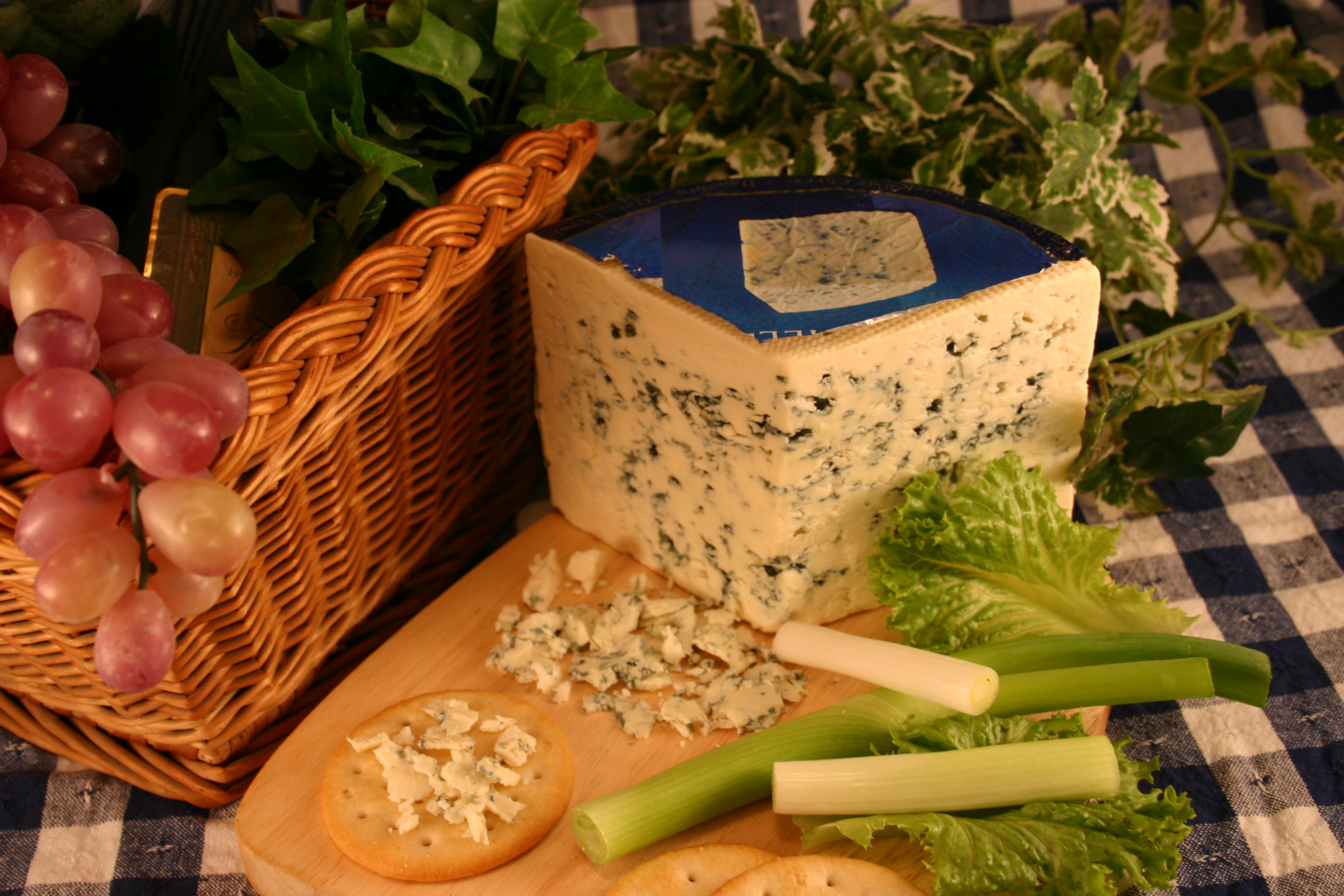
Blue cheeses are made with Penicillium cultures which create the blue veins this cheese is known for. They are aged in a temperature and moisture controlled environment to replicate a cave. Danish Blue is moderate in sharpness with a creamy finish. Try it with a sweet wine like Port to cut through the richness, or open a robust wine such as Shiraz if you are serving up a dish with blue cheese.
Gruyere
Gruyere is a sweet and nutty cheese, which develops a salty earthiness as it ages. Grenache or Syrah works well with Gruyere as they are not too rich and will allow the cheese to be the star of the show.
Romano Pecorino
Another Italian imported cheese, Romano Pecorino boasts a firm texture with a fantastic saltiness. Made from sheep’s milk, it has a very distinctive flavor that is an asset to any cheeseboard. For a full Italian experience, pair this cheese with a Chianti. This is a dry red wine with high acidity and plenty of fresh berries perfect for the salty flavor of this cheese.
If you are looking to add some extra cheeses to your red wine pairing board then Brick, Parmesan, Cheddar, Havarti,and Ohio Premium Swiss are all good options.
Ideas for celebrating National Red Wine Day
- Have a wine tasting. Ask your friends to each bring along a bottle of red wine and a cheese of their choice. Explore which go best together and enjoy pairing the flavors.
- Cook with red wine. It is a great addition to pies, stews, and even pasta dishes. Find a new recipe to have a go at or enjoy making an old favorite. We love to make a rich tomato sauce laced with red wine and slow cooked for maximum flavor.
- Have a glass of wine and a nap! Red wine contains melatonin which causes us to feel sleepy. If you don’t feel like socializing then this might be the quietest way to celebrate with a moment for yourself.
How will you be celebrating National Red Wine Day? Let us know in the comments below!
Cheese Glossary: The Letter C
We continue our cheese glossary with the letter C!
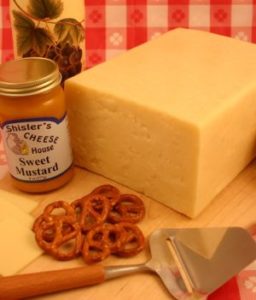
Casein
The main protein present in milk and, therefore, cheese. It makes up around 80% of the protein in cow’s milk, and is also highly present in sheep and buffalo milk.
Cheddar
Cheddar cheese has been produced in England since at least 1170. A pipe roll of King Henry II from that year records the purchase of 10,420 lb. at a farthing per pound. One suggestion is that Romans brought the recipe to Britain from the Cantal region of France, where it was adapted.
Central to the modernization and standardization of Cheddar was the nineteenth century Somerset dairyman Joseph Harding. He has been described as the father of Cheddar because of his technical developments, promotion of dairy hygiene and unremunerated propagation of modern cheese-making techniques.
Made in the classical way, it tends to have a sharp, pungent flavor, often slightly earthy. Its texture is firm, with farmhouse traditional Cheddar being slightly crumbly. The ideal quality of Cheddar was described by Joseph Harding in 1864 as “close and firm in texture, yet mellow in character or quality; it is rich with a tendency to melt in the mouth, the flavor full and fine, approaching to that of a hazelnut.”
“Cheddaring” refers to an additional step in the production of Cheddar cheese where, after heating, the curd is kneaded with salt, then is cut into cubes to drain the whey, then stacked and turned.
Chevre
Chevre (shev-ray) is a term which denotes a cheese made from the milk of goats, with the word chevre meaning goat in French. It is a fresh cheese which resembles cream cheese. This type of chevre tends to be slightly crumbly, creamy, and may have a strong goat flavor. Soft chevre is often herbed or spiced, and may be decorated with flowers or rosemary. Creamy chevres tend to have more complex flavors and an almost buttery feel. It softens beautifully when exposed to heat, although it does not melt in the same way that many cow cheeses do. Firmer chevres with rinds are sometimes baked in the oven to form a gooey warm cheese which is ideal for spreading on bread with roasted garlic, or alone. When chevre is served hot, it is known as chevre chaud.
Colby
Colby cheese is a semi-hard cow’s milk cheese native to the United States. Its flavor is more mild and creamy than the flavor of Cheddar. Washing the curds during the cheesemaking process reduces the acid content, making Colby cheese less tangy when it is finished. Colby also has a higher moisture content, and it tends to be much softer than cheddar.
Colby cheese was developed in the late 19th century by Joseph Steinwand, the son of a Wisconsin cheese maker. Steinwand named the cheese for the town in which the family had built their first dairy, and Colby, Wisconsin continues to celebrate Colby cheese today.
Curd
Curds are obtained by coagulating milk by adding an acidic agent such as lemon juice, vinegar or rennet. The milk proteins come together in solid masses separated from the liquid. You will also see curds form if you have milk that has gone past its best.
Cutting
This is the process of cutting into the curds to create more surface area so that the whey (liquid) can come away from the solids.
Cheese
We know what cheese is, of course, but we want our cheese glossary to be as thorough as possible! For the avoidance of doubt or if you are simply intrigued, the dictionary definition of cheese is “a food made from the pressed curds of milk, firm and elastic or soft and semi-liquid in texture”.
As always, if you have words that you would like us to define in our cheese glossary, let us know in the comments!
The World’s Most Expensive Cheeses
We recently brought you a post about the world’s most expensive wines, but we realized that it was the time to tell you about the world’s most expensive cheeses. These probably aren’t a cheese that you want to throw on your daily cheeseboard, but we can certainly dream about them!

World’s Most Expensive Cheeses: Pule
Pule is made from the milk of the Balkan donkey from Serbia. It costs a whopping $600 per pound, making it the most expensive cheese in the world! 25 liters of milk is used to make just one kilogram of the cheese. Low in fat, but high in vitamins and proteins, this cheese is said to boost the immune system. If you want to get your hands on a piece of this cheese, you have to order it as it isn’t available on the market!
World’s Most Expensive Cheeses: White Stilton Gold
This cheese is only slightly less expensive than Pule, coming in at $420 per pound. It is a British cheese that comes under a Protected Denomination Origin. It is a soft white cheese, rather than the blue of traditional stilton, and is actually made with real gold.
World’s Most Expensive Cheeses: Wyke Farms Reserve Cheddar
Another British cheese! Cheddar is often aged in caves and this expensive version is made in Somerset, in the south west of England. It is $200 per pound and, despite its incredible price, very popular. It is matured for at least 15 months and has both creaminess and nuttiness. The exact method for making it is a closely guarded secret.
Extra Old Bitto
This is a cheese sold exclusively in China, where you can find some of the oldest and most expensive cheeses that the world has to offer. It is aged for up to 10 years and costs around $120 per pound. It originated in Italy, where it is sometimes known as Bitto Storico. There are only 12 producers of this expensive cheese.
Caciocavallo Podolico
Another cheese of Italian origin, its name means ‘horse cheese’. However, it is not made from horse’s milk. The name, in fact, refers to the practice of horses carrying the cheese as it cured. The cheese would be suspended from the horse, almost like saddlebags. It is made from the raw milk of a rare breed of Italian cow called the Podolica. This cow spends some of its life living in the mountains, grazing on nettles, blueberries, rosehips, hawthorn, cornelian cherries, juniper, and wild strawberries. These flavors can sometimes come through in this unusual cheese. It is a hard cheese that is quite dry and sometimes has holes. The taste is described as vegetal and savory inside the rind that forms as it matures for a year.
Which of the world’s most expensive cheeses would you like to try? Have you actually tasted any of them? Let us know in the comments; we’d love to hear all about it!
Cheese Glossary: The Letter B
We continue our Cheese Glossary with the letter B!

A close relation of Swiss cheese, but Baby Swiss is made by substituting water for the milk’s whey in the cheesemaking process. This slows the bacterial action and produces smaller holes and milder flavor than Swiss cheese.
This cheese isn’t actually made from beer! It is a semi-soft combination of Limburger Cheese and Brick Cheese that has a very strong smell and taste. Best enjoyed with rye bread, sliced onion, and a glass of beer.
Brick
A medium-soft cheese made in the form of a large rectangular or brick shape, although it may also be named “brick” because the cheese curds are pressed with clay-fired bricks. It has a sweet, mild flavor when young but matures into a strong ripe cheese.
Bloomy rind
A light white powdery rind that develops on cheeses such as Brie and Camembert. It develops when the surface of the cheese is coated in a Penicillium spore.
Blue cheese
Any cheese that has had a culture of Penicillium added to it. This produces blue veins or spots through the cheese. They are often aged in a temperature- and moisture-controlled environment, such as a cave.
Brined
A cheese that has been brined has matured in saltwater. These include Feta, Halloumi, Gouda, and Gruyere. The salt is used to prevent the growth of bacteria, even in hot conditions. Most brined cheeses will taste clean, salty and acidic. Some brined cheeses are also known as washed rind.
Brushed
Sometimes cheeses are brushed, either by hand or by a machine, to help them stay moist as they ripen.
Burrata
A fresh Italian cheese made from mozzarella and cream. It has an outer shell of mozzarella, filled with stracciatella and cream. Stracciatella is a cheese made from Italian buffalo milk and is made up of small, creamy shreds.
Butterfat
Which terms would you like to see added to the cheese glossary? Let us know in the comments below!
Health Benefits of Cheese
Did you know that there are many health benefits to eating cheese? Of course, we need to consume everything in moderation but we’re excited to share with you some of the great healthy elements of our favorite food.
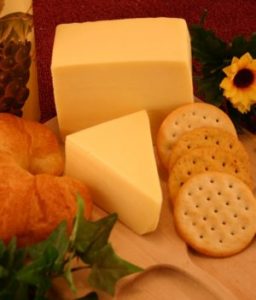
Calcium
Cheese is an excellent source of calcium. This is important for promoting healthy bones and teeth, especially in our younger years. Even more essentially, calcium helps our muscles to contract and our heart to beat. It is quite vital for our health!
Fat
Some fat in our diet is very important and cheese can provide this whilst also offering many other health benefits. If you need to gain weight for health reasons, then cheese can be an excellent addition to your balanced diet. The healthy fat known as CLA supports our immune systems, regulates blood sugar levels and can even reduce your risk of heart disease. CLA is found in a variety of cheeses, but especially those made with milk from grass-fed cows.
Protein
This is responsible for repairing and protecting our body and also promotes a good immune system. As our bodies do not store protein, we need to make sure that we eat adequate amounts of it each day. Hard cheeses such as Parmesan have the highest protein content; wet, fresh cheeses will have much less.
Vitamin B12
This is the largest and most complex vitamin that we have knowledge of. It helps the production of red blood cells, protein and DNA. Without it, we can experience lethargy and muscle weakness. Cleverly, our body can store away any excess of B12 that we don’t need at the time for up to a year. We can find the highest B12 content in delicious Swiss cheese. That’s an excuse to eat some if ever we heard it!
Vitamin K2
This vitamin can help to prevent some of the most common diseases facing us. It works with calcium and vitamin D to help your bone, skin and dental health. This is another vitamin found most often in hard cheeses, especially Gouda and brie.
Glutathione
You might not have heard of this antioxidant, but a study found that it is found in dairy products. It is great for our brain health and preventing age-related degeneration.
So, there you have it, cheese isn’t simply bad for you. In fact, in most cases, it is the things that we eat cheese on that are unhealthy: pizza bases, nachos, and so on. As part of a balanced diet, cheese provides many of the health benefits that are essential to us. Consider eating cheese with salads, fruits or in dishes with vegetables to keep getting those health benefits without the less healthy foods.
It has been shown that cheeses made with milk from grass-fed animals are the best in terms of nutrients, so you’ll be pleased to know that many of our local cheeses are made from the highest quality milk, with no artificial hormones added.
How do you like to stay healthy? Let us know in the comments below!
Cheese Glossary: The Letter A
This is the first of our posts that will help you to understand all of the terms associated with cheese. We decided that because there are so many different words to describe different cheeses, as well as lots of different techniques used in cheese-making, it would be helpful to explain some of these for our wonderful readers and customers. If you have a word that you would like us to add to the cheese glossary, let us know in the comments below.

Acidity
When cheese is made, bacteria digest sugars in the milk to produce lactic acid. Different factors can be used to make cheeses more or less acidic. Cheeses with a high acidity will be sour, sharp or tart in flavor.
Aged
Cheese that is aged has been left for a certain amount of time in specific conditions. The aging process involves using temperature, humidity, molds, bacteria and time to change the cheese. An aged cheese will lose moisture, making it harder than fresh cheeses. One of our favorite aged cheeses is our delicious aged Canadian cheddar.
Affine
Another word meaning to age cheese.
Affineur
This very fancy term indicates a person who ages cheese. They will decide when it is perfectly ripe and ready for you to eat.
American
American cheese is a processed cheese that is orange, yellow, or white in color and mild in flavor. It has a medium-firm consistency, and melts easily which might by why we enjoy it on cheeseburgers.
Amino Acids
These acids form proteins, which react with other compounds to make cheese tasty.
Fresh and delicious Amish butter is produced from butterfat, one of the byproducts of cheese making.
Ammoniated
This is when a cheese begins to smell or taste of ammonia. It means that the cheese has over-ripened and should, therefore, not be eaten.
Annatto
An orange-red food coloring that is derived from the seeds of the achiote tree. It is used to add yellow and orange colors to foods including cheese. In larger quantities, it can add a nutty, peppery flavor as well as a peppery aroma to foods.
A point
This is a French term to express that a cheese has reached its peak ripeness.
Appellation
This is a legally controlled name for a particular food or drinks, usually associated with a specific place. These are associated with products such as cheese and wine. There are several different terms depending on the country, including Appellation d’Origine Protegee (France) and Denominazione di Origine Protetta (Italy). We’ll always indicate if a cheese has a specific origin.
Asiago
Asiago cheese is an Italian cheese named for a region in Italy where it was first produced. Its texture varies from semi-firm to firm depending on how long it is aged; anywhere from three months up to a year.
We hope that you will find this cheese glossary useful in understanding more about cheese! Did we miss any ‘A’ words that you’d like to learn about? Tell us below and we’ll let you know what they mean!
Do Mice Really Like Cheese?
We all know the image of a mouse eating some cheese. It’s prevalent in cartoons and we even chose it for our own logo. Many of us would first think to use cheese if we were hoping to catch a mouse. So, we thought it was about time that we found out: do mice really like cheese?
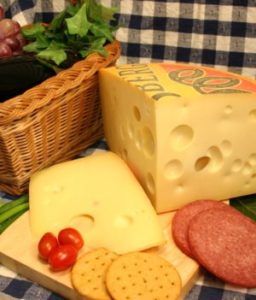
The simple answer: yes! But it’s a little more complex than that.
In various studies, it has been shown that mice will eat cheese, but that they will usually try to eat something with a higher calorie content or carbohydrate content. For example, the BBC conducted a simple study where peanuts or cheddar cheese were available, and the cheddar cheese was entirely avoided by the mice. They, instead ate the nuts, although one ate a grape; they must have been having a healthy day! Peanuts have approximately 50% more calories than the cheese, so the mice are choosing a food that will give them energy for longer.
Mice are more likely to gravitate towards sweet treats such as fruits or even chocolate, it has also been found. They can be particularly sensitive to smell, so a very pungent cheese is likely to put them off rather than entice them. In rural areas, they will look for grains, fruits, and seeds to eat.
So, if you’re offering a mouse some cheese and nothing else is available, they will go for it. But given a choice, they might opt for something with more calories. We think our mouse must simply be a very hungry cheese lover!
There you have it. If you have always been wondering ‘do mice really like cheese?’ then now you have the answer! Do you have other interesting questions about cheese? Let us know in the comments and we’ll try to answer them!
The World’s Most Expensive Wines
Do you know anything about the world’s most expensive wines? Today we’re sharing a list of some of them with you. Most of these might be out of our reach but it’s still fun to dream about what could be in your glass this weekend! Wine prices keep going up year on year as collectors keep seeking the most unusual and special bottles.

World’s Most Expensive Wines #1: Domaine de la Romanee-Conti Romanee-Conti Grand Cru, Cote de Nuits, France
This has an average price of $20,405 and a maximum price of a whopping $531, 419!
This is a Burgundy wine, made from Pinot Noir grapes. According to its tasting notes, it has a bouquet of berries, oak and plums. The taste has spicy notes of ginger and cinnamon, alongside luscious red fruits. It would pair well with duck or goose. This sounds to us like the kind of bottle that might be perfect for Christmas celebrations.
World’s Most Expensive Wines #2: Domaine Leroy Musigny Grand Cru, Cote de Nuits, France
The second most expensive wine is also a Burgundy, with an average price of $15,680 and a top price of $83,040. Its average price has risen by 171% in the last two years!
World’s Most Expensive Wines #3: Egon Muller Scharzhofberger Riesling Trockenbeerenauslese, Mosel, Germany
The most expensive of the white wines in the market, this has an average price of $13,558 with its top price hitting $32,660. Riesling is known for being very fragrant with a high acidity. It is currently only available at auction, so it is widely sought after.
World’s Most Expensive Wines #4: Domaine Georges & Christophe Roumier Musigny Grand Cru, Cote de Nuits, France
We return to France for this bottle, which averages at $13,050 but has sold for up to $24,748. It won’t surprise you to learn that this is another Burgundy.
World’s Most Expensive Wines #5: Domaine Leflaive Montrachet Grand Cru, Cote de Beaune, France
A white wine from France now, with an average price of $10,100 and a maximum of $16,469. This is a Chardonnay, arguably one of the world’s most popular wine varieties. This wine is still rising in value and is considered the best white wine in the world! Its tasting notes remark on the vibrancy of its bouquet and the spice present in its flavor.
We wonder if an American wine might ever make into the top five? For now, the most expensive wine from the USA is the Screaming Eagle Sauvignon Blanc from Oakville which sits at #9. With an average price of $6,070 and a maximum price of $9,256 its certainly still a wine for a very, very special occasion! It hails from Oakville, one of California’s most well-known wine regions right in the heart of the Napa Valley. You could expect it to have the forward flavors of green apples, stone fruit and flint. If we ever managed to acquire a bottle we would, of course, enjoy it with our white wine collection!
Want to learn more about different wines and their price points? Check out Wine Searcher.
Which of the world’s most expensive wines would you most like to try? Let us know in the comments below!

